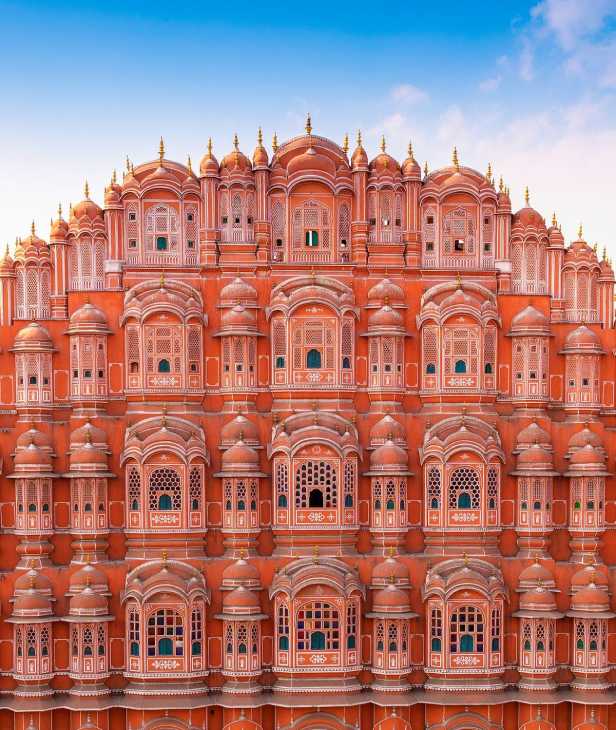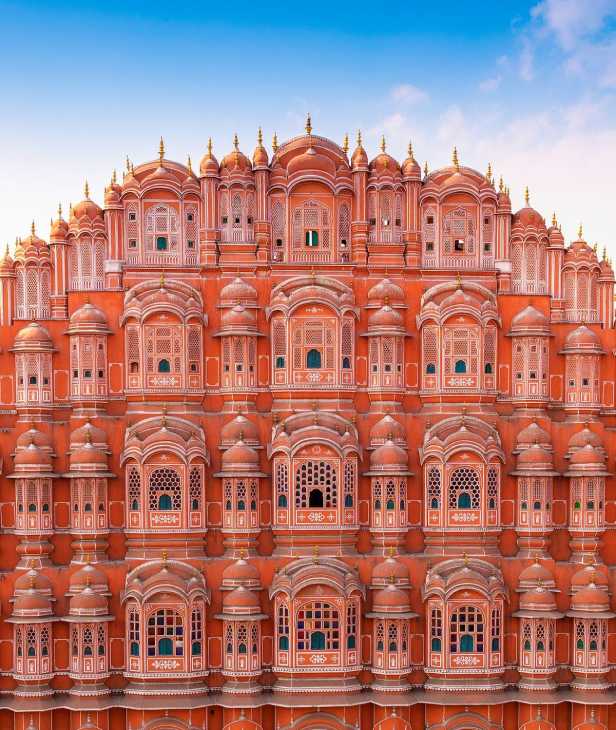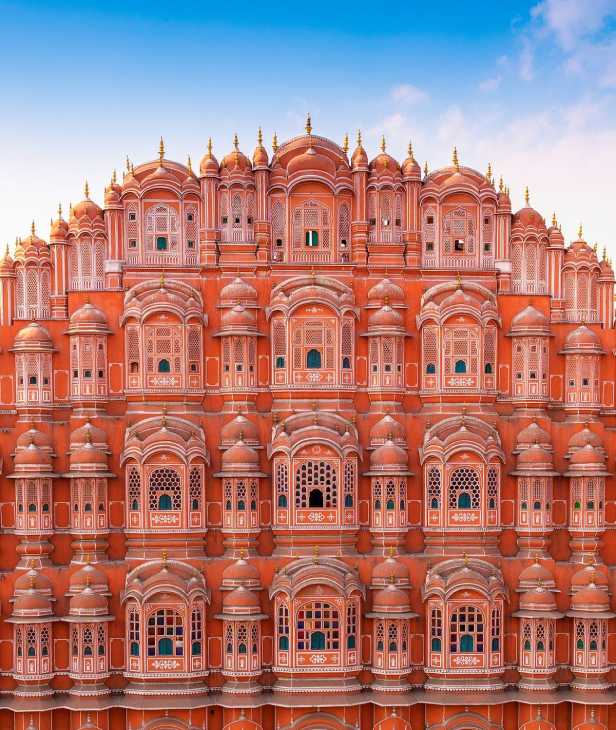
Forts and Palaces in Rajasthan
Rajasthan stands as the Land of Kings which contains several majestic forts and palaces throughout India. Rajasthan presents famous fortresses and palaces which narrate a combination of courageous tales and noble royal pasts along with magnificent architectural achievements. The historical monuments showcase Rajput, Mughal and European influences that demonstrate the remarkable past of Rajput kings and rulers.
Every structure throughout Rajasthan maintains a unique story that makes it stand out which includes the majestic Amber Fort in Jaipur along with the romantic Udaipur’s City Palace and the impregnable Mehrangarh Fort in Jodhpur and the haunted ruins of Bhangarh. Historic fortresses and regal palaces throughout Rajasthan appeal to devotees of both architectural and historical subjects as well as royal experience seekers.
Forts and Palaces in Rajasthan
This blog will investigate famous Rajasthan forts and palaces together with their histories and architectural merits and visitor opportunities.
Amber Fort, Jaipur
Among all Indian forts Amber Fort (Amer Fort) holds a prominent position and nestles perched atop a hill close to the city of Jaipur. The architectural marvel that is Amber Fort was built during 1592 under Raja Man Singh I and combines both Rajput and Mughal architectural elements.
Highlights:
A magnificent Mirror Palace known as Sheesh Mahal shows its glory through an ensemble of over three thousand tiny mirrors.
The royal meetings took place within the Diwan-i-Aam while Diwan-i-Khas served as the site for private royal discussions.
Both elephant rides and evening light and sound shows are available at the fort.
Best Time to Visit: October – March
Mehrangarh Fort, Jodhpur
The impressive Mehrangarh Fort stands elevated 400 feet above Jodhpur to become one of the most enormous and significant fortified structures throughout India. The fort dates back to 1459 after Rao Jodha constructed it while gaining fame for its imposing stone walls as well as its magnificent palaces and extensive historic significance.
Highlights:
Among its exquisite palaces stand out Moti Mahal and other remarkable palace structures comprising Phool Mahal and Sheesh Mahal.
The fort museum showcases rare artifacts, weapons, and royal costumes.
Offers a spectacular panoramic view of Jodhpur, the famous Blue City.
The fort features zip-lining experiences which offer thrilling rides as an attraction for adventure seekers.
Best Time to Visit: October – March
City Palace, Udaipur
Rajasthan boasts the City Palace of Udaipur as its most charming and artistically beautiful fort fortress which overlooks Lake Pichola. Maharana Udai Singh II established the palace through a meld between Mughal and Rajasthani architectural styles in 1559.
Highlights:
Houses possess intricate balconies and courtyards as well as interiors adorned with mirror work designs.
The Crystal Gallery purchases exclusive rare crystal furniture and spectacular chandeliers for display.
Visitors can admire incredible vistas of Lake Pichola together with Jag Mandir Palace from the location.
Tourists can enhance their experience by riding boats departing from the palace jetty that lead to Jag Mandir.
Best Time to Visit: October – March
Kumbhalgarh Fort, Rajsamand
Throughout the 15th century Rana Kumbha constructed Kumbhalgarh Fort which gained fame for its 36-km-long defensive wall that ranks second in length after the Great Wall of China. Visitors recognize this UNESCO World Heritage Site because of its powerful defensive system.
Highlights:
The establishment contains 360 religious temples among which stands out the revered Neelkanth Mahadev Temple.
Offers spectacular views of the Aravalli Hills.
Leopards together with wolves make their home in the Kumbhalgarh Wildlife Sanctuary.
Every day the charming sunset spectacle with light and auditory effects creates a magical atmosphere during evening hours.
Best Time to Visit: October – February
Jaisalmer Fort, Jaisalmer
Jaisalmer Fort received its Golden Fort nickname after it rose under the construction of Raja Rawal Jaisal in 1156. The fort stands out as one of the surviving living forts since residents continue inhabiting its structures. The yellow beams of sunrise and sunset highligh the fort which harmonizes perfectly with the surrounding Thar Desert landscape.
Highlights:
The fort contains Jain temple sanctuaries decorated with detailed designs throughout their structure.
The small roads inside the fort structure guide visitors to various marketplaces and havelis and restaurants.
Stunning views of the golden sand dunes of Jaisalmer.
The Desert Festival occurring during February every year brings cultural elements to the celebrations.
Best Time to Visit: October – March
Chittorgarh Fort, Chittorgarh
As a hallmark of Rajput valor and dedication the massive Chittorgarh Fort ranks as the biggest fortress within India by spanning 700 acres. The fort which Rana Kumbha constructed underwent three significant sieges following the tragic jauhar event of Rani Padmini.
Highlights:
A Rajput victory served as the motivation to construct the Vijay Stambh (Victory Tower).
Rani Padmini witnessed Alauddin Khilji while he stood reflected in a mirror at her palace.
This temple at Kalika Mata serves Goddess Kali as its main deity.
Nowadays Chittorgarh Festival serves to commemorate the historically important role of the fort.
Best Time to Visit: October – March
Nahargarh Fort, Jaipur
Maharaja Sawai Jai Singh II constructed Nahargarh Fort during 1734 when he built it on the Aravalli Hills. Visitors can appreciate outstanding Jaipur views from this location most dramatically during sunset hours.
Highlights:
The Madhavendra Bhawan, a beautiful palace with decorated rooms.
Visitors come to this fort because of its widespread spooky stories about ghosts.
The Rajasthan Wax Museum together with Sheesh Mahal serve as the most popular sites.
viewpoints of sunset and picnics are among the main activities at this fort.
Best Time to Visit: October – March
Bhangarh Fort stands as the Haunted Fort in Alwar.
Professional ghost-hunters worldwide recognize Bhangarh Fort as the prime Indian location for paranormal activities. Paranormal phenomena surround Bhangarh Fort ever since Maharaja Madho Singh built it in 1613 until today when the ruins remain.
Highlights:
Visitors experience an abnormal feeling during the evenings at this site.
According to the area's well-known story a tantrik's curse resulted in the collapse of the fortress.
The local authorities through official government regulations bar visitors from entering the premises after sunset hours.
Best Time to Visit: October – March
Conclusion
Rajasthan’s forts and palaces exist as more than architectural marvels because they permanently narrate India’s royal history. The Rajput kings left their legacy in every stone wall together with their historical battles and noble ceremonies along with their traditional customs at each gateway and courtyard. These structures continue to exist as active historical artifacts which allow visitors to walk through history and witness the royal excellence of Rajasthan's noble reign.
The architectural wonders of Rajasthan include the valorous Amber Fort in Jaipur and the Udaipur palace that stands romantic and overlooks peaceful Lake Pichola. Every royal fortress and majestic palace in this region represents authentic architecture, cultural heritage and historic significance. Each enthroning fort in Rajasthan displays the remarkable talent of the Rajputs through majestic structures like Mehrangarh Fort in Jodhpur and Kumbhalgarh Fort with its Great Wall and the golden Jaisalmer Fort that emerges from desert lands.






